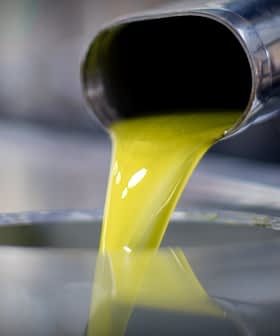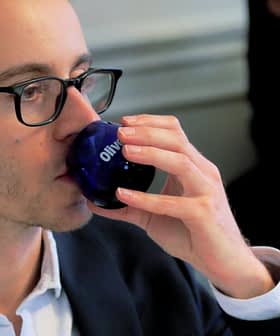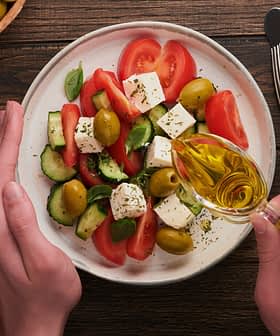For Some, Choosing Olive Oil Is All in The Numbers

The author received an invitation to attend a conference in Malaga next summer from the Oleocanthal Society of Spain, but has declined, expressing skepticism about the focus on the health benefits of extra virgin olive oil based on phenolic profiles. The author criticizes the emphasis on chemical compositions over sensory experiences in determining the value of olive oil, arguing that consumers are still confused about how to choose high-quality oils despite growing awareness in the industry.
Last week, I received an invitation from the Oleocanthal Society of Spain to attend a conference in Malaga next summer.
I probably receive twenty proposals a year to attend such gatherings of researchers, usually with airfare and expense accommodations. I seldom go.
Once in a while, I’ll open the conference program attached to the invitation to find that I’m already listed as a speaker on the schedule. And this is from scientists whose job is to establish facts.
This one is called “Second Health Matters Convention on EVOO, Phenols, Fatty Acids and the Mediterranean Diet.” It might not be the most compelling title, but the hotel looks fine.
I get it that researchers have grant money they need to spend, and a few days of roundtable discussions on the Costa del Sol is bound to yield scientific breakthroughs, but I’ll be passing on this one, too.
The conference coincides with a competition called the “The World’s Best Healthy extra virgin olive oil Contest” — another showstopper of a title.
The contest ranks entries based on their content of “biophenols, oleocanthal and fatty acids,” according to their website, in contrast to the taste tests by sensory experts employed by most international competitions, including the NYIOOC.
A few years ago, Boundary Bend — the Australian company that has done a lot for our industry — was circulating press releases that their Cobram Estate brand had been named the “world’s healthiest olive oil” by the Malaga contest.
I went on record criticizing Boundary Bend’s claim in an editorial that questioned the notion that one extra virgin olive oil could be declared healthier than another if it had more of a certain phenol. Experts I consulted, including the guy who discovered oleocanthal, agreed it was a reach.
Perhaps in response to my article, these well-meaning researchers, who I’m sure are just trying to draw attention to the health benefits of extra virgin olive oil, pivoted from referring to the awarded brand as the world’s healthiest olive oil to the best healthy olive oil.
This year, the contest received less than 50 entries, which means producers and the public care no more than I do about the event. But the conference in Malaga, which will feature the few dozen winners of the best whatever competition, will certainly bring together the camp within our industry that I’ll call the phenatics.
These folks have been trumpeting extra virgin olive oil as a functional food (which it certainly is) and seem to share the belief that the phenolic profile and medicinal properties, as measured in a lab, should be the focus when determining the value for the consumer.
I won’t get into the chemistry here because it bores me to tears. I suspect many consumers might feel the same.
Polyphenols are present in all extra virgin olive oils. Certain cultivars and production variables lead to higher levels of phenols. Still, we don’t know the optimal numbers, and it might be that consuming moderate amounts often will have a more significant effect on health than getting a megadose occasionally.
But I’ve always been a little put off by their zealotry, which can read like an indictment:
“Tastings are essential for EVOO, but they cannot be judged by a partial jury, which is one on which the palates and smells of those juries depend,” says the organizer of the conference José Amérigo, the same guy who invited me to attend.
“It is no use to the consumer who has different tastes and smells. The only thing that guarantees that an extra virgin olive oil is beneficial for the health of the consumer is the nutritional information, which must be attached to the bottle.”
And then there was this:
“You cannot continue to deceive the good faith of the extra virgin olive oil producers, you have to tell them the truth,” Amérigo admonishes. “And the truth is based on chemistry, the other is peanuts.”
But Amérigo certainly knows the real truth is that sometimes good chemistry tastes like peanuts.
Take Dr. Gundry, the Beverly Hills charlatan who is making a killing selling high-phenolic lampante oil that one expert called “the worst oil I have ever tasted.” If chemistry is everything, give it to me straight and keep the motor oil.
Extra virgin olive oil should be an easy sell. For thousands of years, it has occupied the cornerstone of the healthiest dietary regimens while making anything it touches more delicious than it was before.
Yet consumers are still utterly bewildered and uninformed on matters of olive oil quality. We’ve seen sustained international campaigns by thousands of producers and stakeholders to clear the air by focussing on how high-quality olive oil should taste.
Extra virgin olive oil is, by its very definition, fruity, bitter and pungent. Bitterness and pungency are direct indications of the presence of phenols. Consumers are slowly warming up to more bitter oils, as they already have for chocolate, beer and coffee, where some bitterness is recognized as an indication of quality.
Beyond that, EVOOs are classified as delicate, medium intensity, or robust — which are helpful suggestions when choosing an oil for a particular culinary application.
The phenatics don’t want to hear all of that. They seem to think the best way to add value is through a summary of chemical compositions — as if that will dispel the confusion that abounds.
There are regions, terroirs, cultivars and processing techniques that yield oils with unique sensory and chemical characteristics. The diversity of extra virgin olive oils worldwide is precious, and we must celebrate and protect them all.
Our industry is still working to fix a sullied reputation earned through centuries of dishonesty and deceit when the “extra virgin” on the label rarely reflected what was inside. Of course, we could get away with it for so long because consumers never knew how to taste olive oil for themselves to determine quality.
Through educational initiatives and an army of ambassadors, we’re finally seeing a growing understanding among consumers that choosing extra virgin olive oil isn’t rocket science.
Wait until they’re asked to read a rundown of phenolic compounds. Ask them to trust what the label says without any way of verifying it, just like in the old days.
Unless they have a lab in their pantry.









